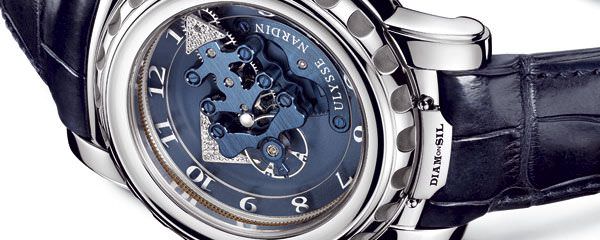
In twenty years, we have observed the renaissance of an outdated technology – the mechanical watch – and its progressive refinement – the complication craze – followed by the quasi trivialization of its most advanced techniques – the standardization of the tourbillon – and the fashionization of its products – the great diamond wave.
We thought that we had witnessed a complete cycle in this extremely short period, a cycle that has seen, for example, Swiss watch exports climb from CHF 4.3 billion in 1986 to 13.7 billion in 2006! And, we also believed that we had seen ‘everything’ that mechanical watchmaking would serenely follow its rising road, mainly by opening new markets (the famous emerging economies), and that it would basically just continue to ‘clone’ itself indefinitely.
But a new era is dawning in the world of mechanical timekeeping; an era dominated by a sort of hybridization of the ‘old’ wisdom and the newest and most advanced techniques, most notably in the domain of materials. The use of new materials, whether unusual alloys, surface treatments, or synthetic substances, opens new horizons for the ancient and honoured art of mechanical watchmaking.
When it created the first watch requiring no lubrication, Jaeger-LeCoultre took a historic step (see Cover Story on this subject), and the brand is now leaps and bounds ahead of the rest of the industry. This advance was made possible by the gradual integration of a series of new métiers that have grown out of ancestral practices: metal engineers, chemists, analysts, computer designers, even acousticians working side by side with ‘old’ (and young) master watchmakers. Lasers, cutting-edge machine tools, and sophisticated analytical instruments have joined forces with traditional tooling techniques used by the watchmaker as he leans over his workbench.
This major evolution has created changes not only in terms of precision and reliability, but also in term of aesthetics. New technologies in materials go hand in hand with new computer-aided-design methods and progressive control techniques that permit each step of the process to be ‘virtually’ validated. Creativity has thus been liberated, in a sense, even if it realistically remains limited by a wristwatch’s size and shape (round, square, rectangle or tonneau), although the interior workings of watches are being expressed in increasingly different ways.
From a design point of view, we are seeing the ‘dial’ gradually disappear, replaced by a view of the working movement, which directly provides the desired time indications. The engine is no longer hidden under the hood but is being brought out, displayed for all to see, creating a fusion of form and function. Historically, design transformations have come about because of technology — as an example, just look at the radical changes in architecture when concrete replaced stone. It is a safe bet that watchmaking will be no different as it now enters a new era.
Source: Europa Star August-September 2007 Magazine Issue





